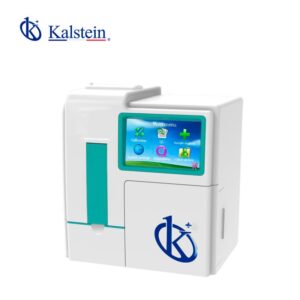Description
The Electrolyte Analyzer YR06407// YR06417 is an advanced and reliable tool designed for precise and swift analysis of electrolytes in various samples, including serum, plasma, whole blood, and diluted urine. This innovative device features a user-friendly interface with a human-machine interactive menu, enabling dynamic and real-time viewing of sample identifiers. With automatic liquid level detection and diagnostic alarms, it ensures superior performance. Moreover, its bubble detection and filtering capabilities eliminate clogs, ensuring accurate measurements every time.
Market Price
On the market, the price of the Electrolyte Analyzer varies depending on the model and specific features, typically ranging from $5,000 to $15,000 USD. This investment should be weighed considering the laboratory’s or clinic’s specific needs, as this analyzer offers a variety of advanced functionalities and accessories that cater to diverse medical requirements.
Frequently Asked Questions
What types of samples can this device analyze? The analyzer is compatible with serum, plasma, whole blood, and diluted urine.
What is the measurement speed of the analyzer? It completes a measurement in less than 30 seconds.
How is the device calibrated? The analyzer performs automatic calibration and two-point correction for ensuring measurement accuracy.
Advantages and Disadvantages
Advantages:
- High precision and speed in measurements.
- Intuitive user interface with real-time visualization.
- Bubble detection and filtering system to prevent clogs.
- Automatic calibration with two-point correction.
- Storage capacity for up to 10,000 test results.
Disadvantages:
- Requires ongoing supply of specific reagents.
- Higher cost compared to less advanced analyzers.
- Regular maintenance required for optimal performance.
Field Use
In practical settings, the Electrolyte Analyzer is pivotal in quickly and accurately evaluating patients’ electrolyte balance. It is indispensable in emergency departments, intensive care units, and clinical laboratories where swift diagnostics and treatment initiation are crucial. Its versatility in handling different sample types makes it suitable for various medical applications.
Recommendations
To maximize the Electrolyte Analyzer’s efficiency, ensure regular equipment maintenance and adhere to the manufacturer’s guidelines on reagent management and calibration. Training staff on its proper usage is vital for achieving precise and reliable results. Keeping detailed records of tests and calibrations performed will sustain the analysis quality over time. We encourage users to request a quote or generate an automatic quote via our Kalstein Plus platform, facilitating informed decision-making and equipping your laboratory with the best equipment on the market.
Technical Specifications
| Model | YR06407 | YR06408 | YR06409 | YR06410 | YR06411 |
| Sample | serum, plasma, whole blood and dilute urine | ||||
| Storage | up to 10000 test results | ||||
| Printer | Internal thermal printer | ||||
| Interface | RS232 port | ||||
| Analysis Method | ion selective electrode (ISE) | ||||
| Measuring speed | <30s | ||||
| Sample position | 39 positions (including 5 emergency and 4 functional positions) | ||||
| Temperature | 5-40°C | ||||
| Relative Humidity | <80% | ||||
| Atmospheric pressure | 86~106 kPa | ||||
| Power supply | AC220V±22V, 50Hz±1Hz | ||||
| Power | <120W | ||||
| Test Parameters | K Na Cl | K Na Cl TCO AG | K Na Cl iCa nCa TCa pH | K Na Cl iCa nCa TCa pH TCO AG | K Na Cl Li |




